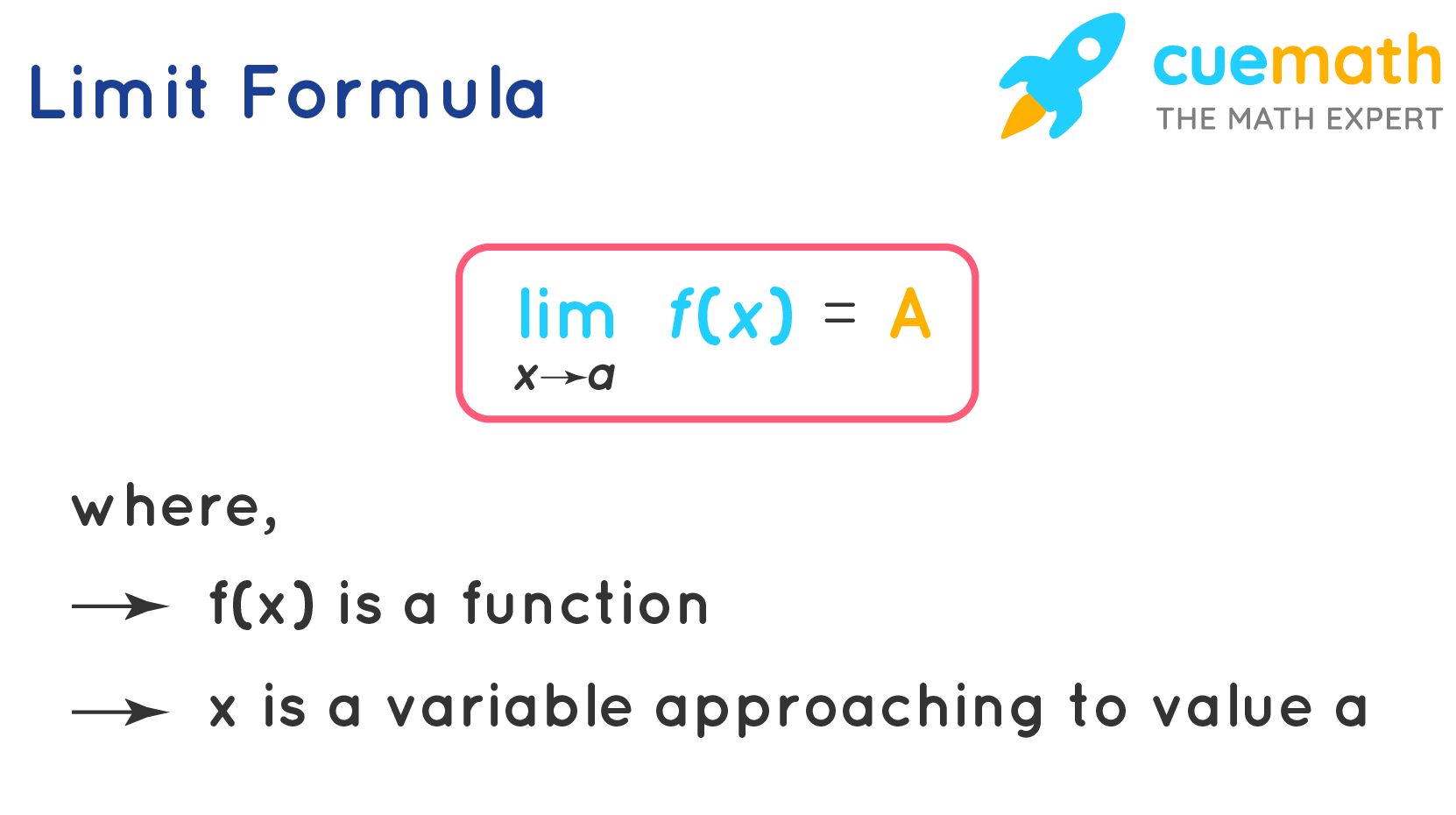Limit Formula
The limit formula is used to calculate the derivative of a function. The limit is the value of the function approaches as the input approaches mentioned value. Limits are used as a way of making approximations used in the calculation as close as possible to the actual value of the quantity. Let us understand the limit formula in detail in the following section.
What is Limit Formula?
The limit formula is the representation of the behavior of the function at a specific point and the formula analyzes that function. Limit describes the behavior of some quantity that depends on an independent variable, as that independent variable approaches or comes close to a particular value.
Limit Formula
Let y = f(x) as a function of x. If at a point x = a, f(x) takes indeterminate form, then we can consider the values of the function which is very near to a. If these values tend to some definite unique number as x tends to a, then that obtained a unique number is called the limit of f(x) at x = a. We can write the formula as:
\(\mathop {\lim }\limits_{x \to a} f(x) = A \)
where,
- f(x) is a function
- x is a variable approaching to value a
It is read as the limit of a function of x equals A as and when x approaches a.

Limits Formulas
The formulas mentioned in the image below are a few limits formulas,

Properties of Limit Formula
There a few properties of the limit formula used while calculation, they are as shown below.


Examples Using Limit Formula
Example 1: Using the limit formula, find the value of \(\mathop {\lim }\limits_{x \to 2} x^2 + 5.\)
Solution:
Putting values in the limit formula,
\(\mathop {\lim }\limits_{x \to 2} x^2 + 5 = 2^2 + 5= 9\)
Therefore, the value of: \(\mathop {\lim }\limits_{x \to 2} x^2 + 5\)is 9.
Example 2: Find the value of: \(\mathop {\lim }\limits_{x \to 0} 3x^3 + 4x+ 5. \)
Solution:
Putting values in the limit formula,
\(\begin{align*}\mathop {\lim }\limits_{x \to 0} 3x^3 + 4x+ 5 &= 3(0)^3 + 4(0) + 5 \\ &= 5\end{align*} \)
Therefore, the value of: \(\mathop {\lim }\limits_{x \to 0} 3x^3 + 4x+ 5\) is 5.
Example 3: Using the limit formula, find the value of \(\mathop {\lim }\limits_{x \to 3} 6x^2 + 10x+ 15. \)
Solution:
Putting values in the limit formula,
\(\mathop {\lim }\limits_{x \to 3} 6x^2 + 10x + 15 = 6(3)^2 + 10(3) + 15 = 99\)
Therefore, the value of \(\mathop {\lim }\limits_{x \to 3} 6x^2 + 10x+ 15. \) is 99
FAQs on Limit Formula
What is Meant by Limit Formula?
The limit formula is used to calculate the derivative of a function. The limit is the value of the function approaches as the input approaches mentioned value. Limits are used as a way of making approximations used in the calculation as close as possible to the actual value of the quantity. The formula is \(\mathop {\lim }\limits_{x \to a} f(x) = A \)
What is the Formula to Find the Limit?
Let y = f(x) as a function of x. If at a point x = a, f(x) takes indeterminate form, then we can consider the values of the function which is very near to a. If these values tend to some definite unique number as x tends to a, then that obtained a unique number is called the limit of f(x) at x = a. We can write the formula as:
\(\mathop {\lim }\limits_{x \to a} f(x) = A \)
where,
- f(x) is a function
- x is a variable approaching to value a
It is read as the limit of a function of x equals A as and when x approaches a.
What are the Names of the Limit Formula Properties?
The properties of the limit formula are:
- Notation of Limit
- Sum Rule
- Extended Sum Rule
- Constant Function Rule
- Constant Multiple Rule
- Product Rule
- Extended Product Rule
- Quotient Rule
- Power Rule
Using the Limit Formula, Find the Value of \(\mathop {\lim }\limits_{x \to 1} 10x^2 + 12.\)
Putting values in the limit formula,
\(\mathop {\lim }\limits_{x \to 1} 10x^2 + 12 = 10(1)^2 +12= 22\)
Therefore, the value of: \(\mathop {\lim }\limits_{x \to 1} 10x^2 + 12. \) is 22.
visual curriculum
